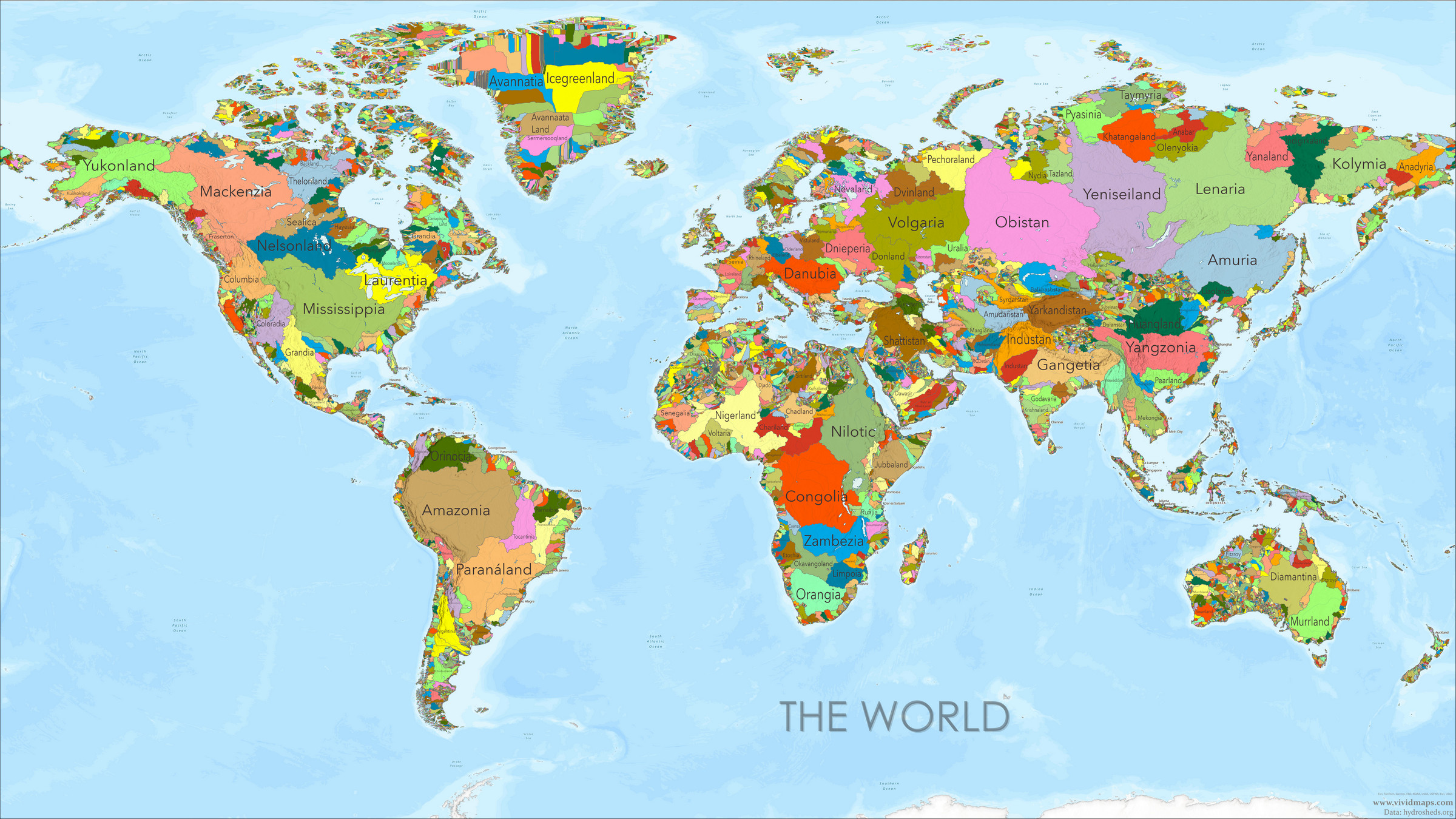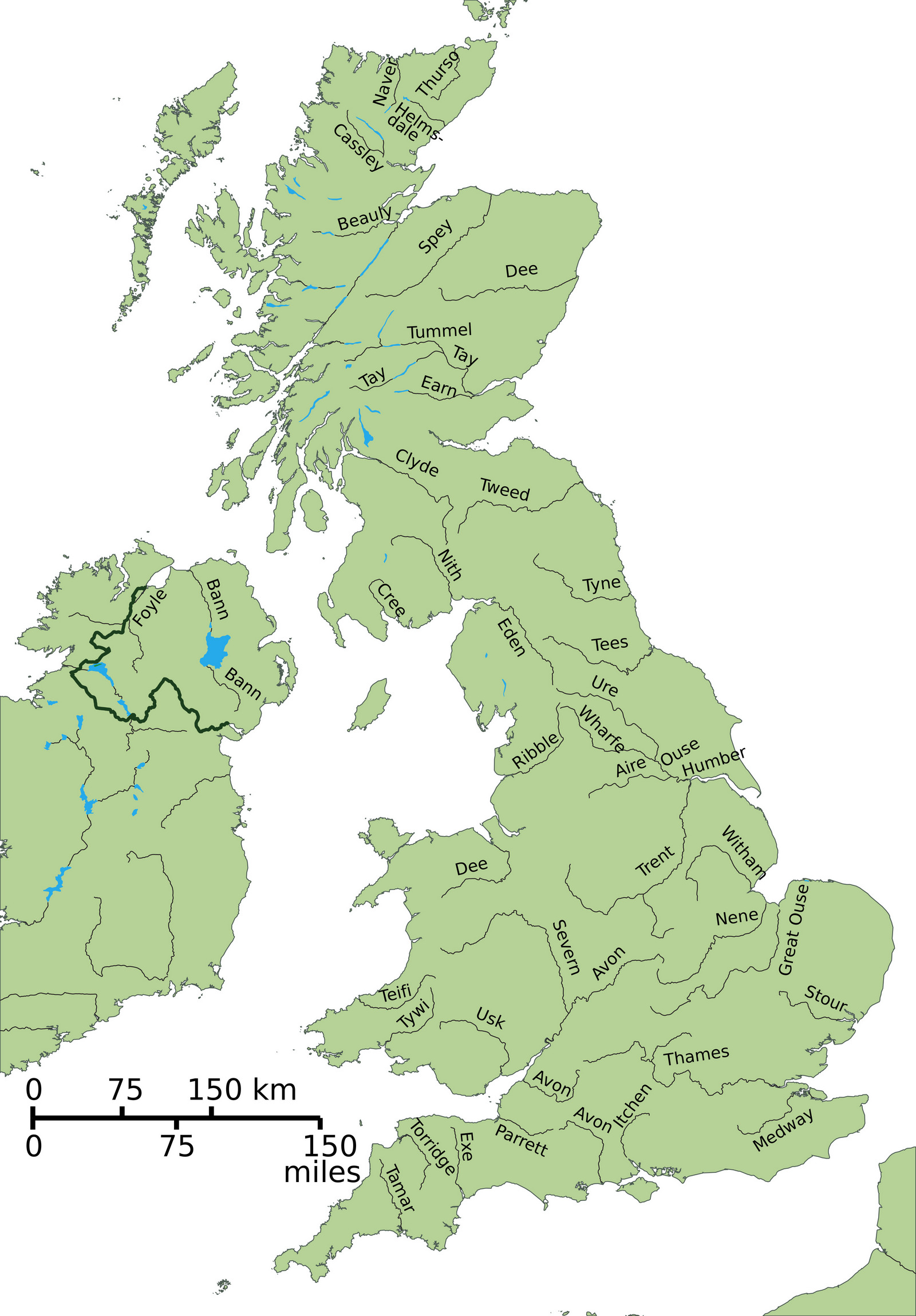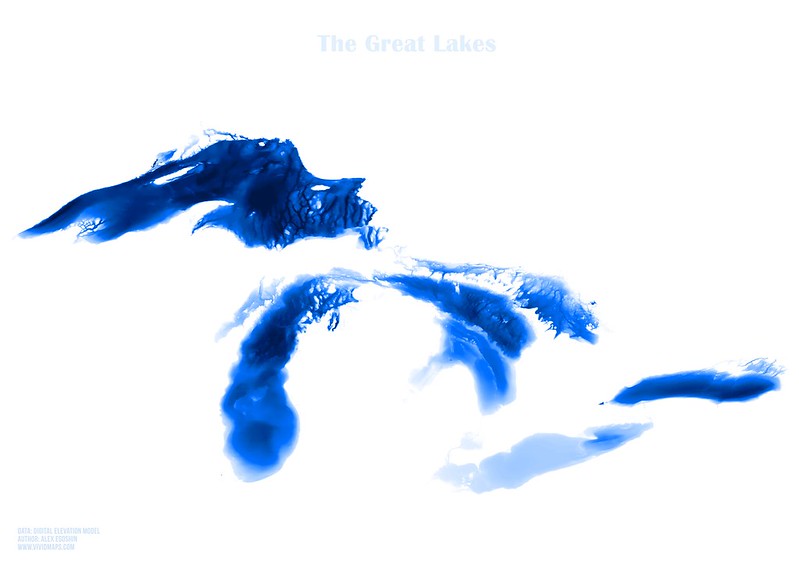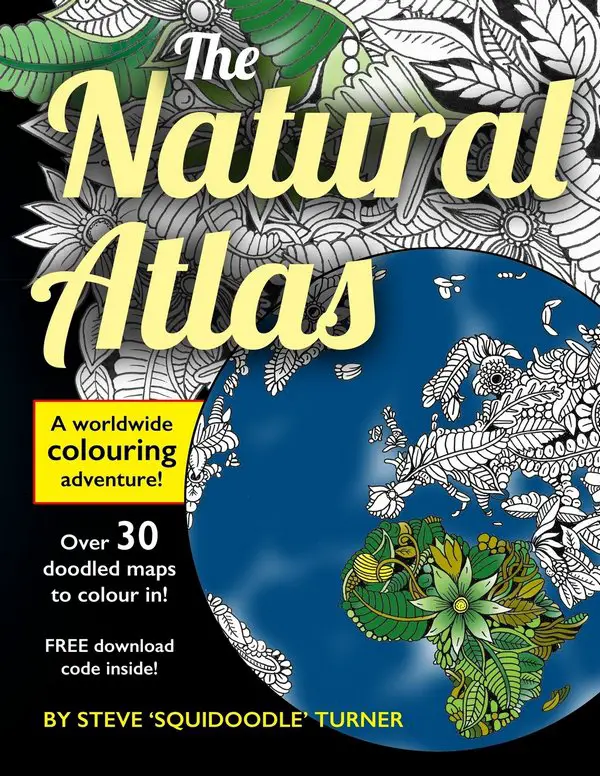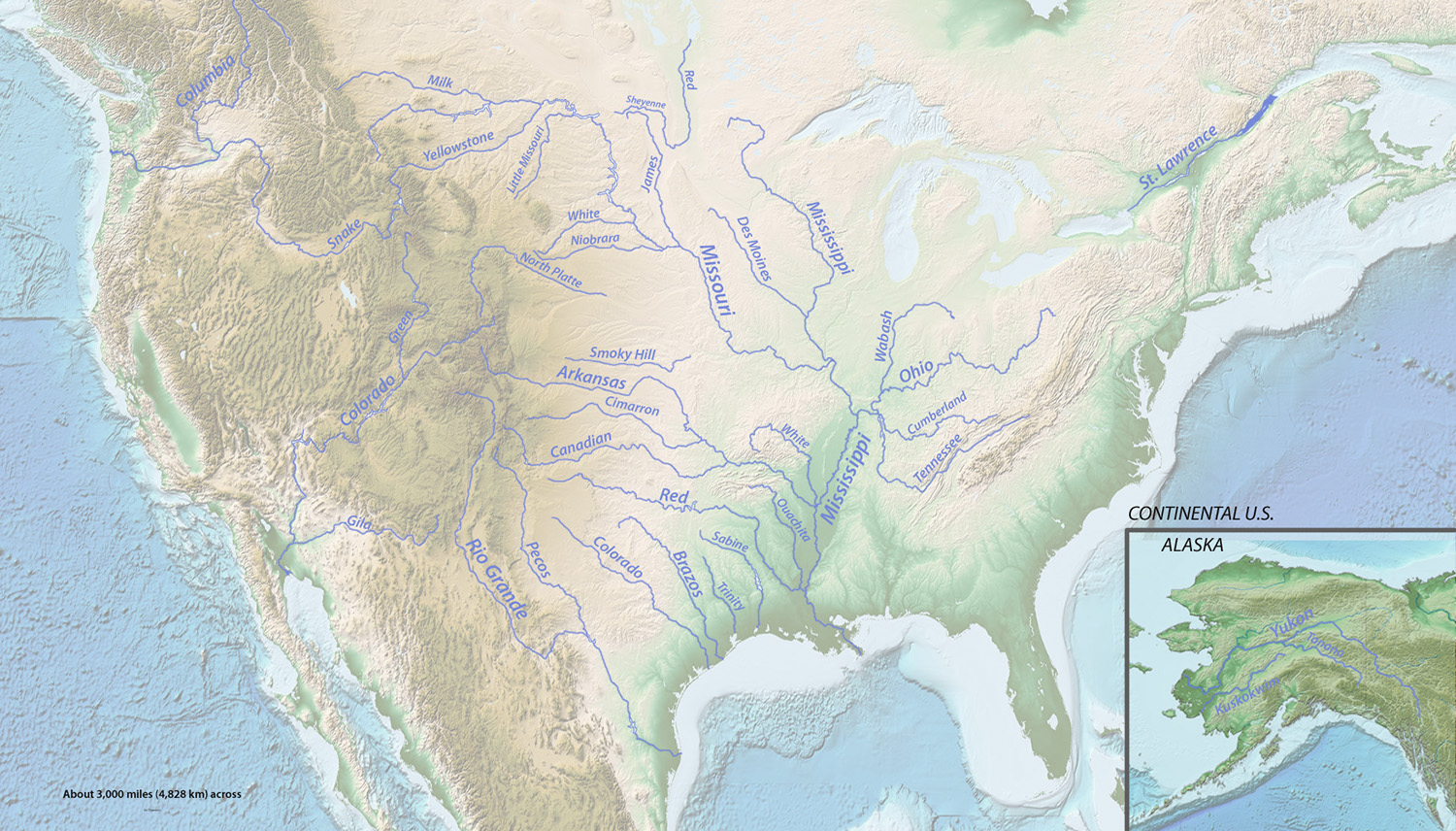Ocean Drainage Basins: How Earth’s Water Systems Shape Our Planet
Every drop of rain that falls on Earth tells a story. Whether it lands in the Himalayas, the Amazon rainforest, or your backyard, that water is part of an incredible journey through one of Earth’s most fascinating systems – ocean drainage basins. These massive natural networks shape our continents, feed our oceans, and influence weather patterns that affect billions of people.
The Global Water Highway
When rain falls or snow melts, it begins an epic journey. Some water travels thousands of miles through rivers and streams, while other drops take underground paths or flow through wetlands. Most of this water – about 83% – eventually reaches one of Earth’s major oceans. The remaining 17% flows into landlocked basins, creating unique ecosystems like salt lakes and desert oases.
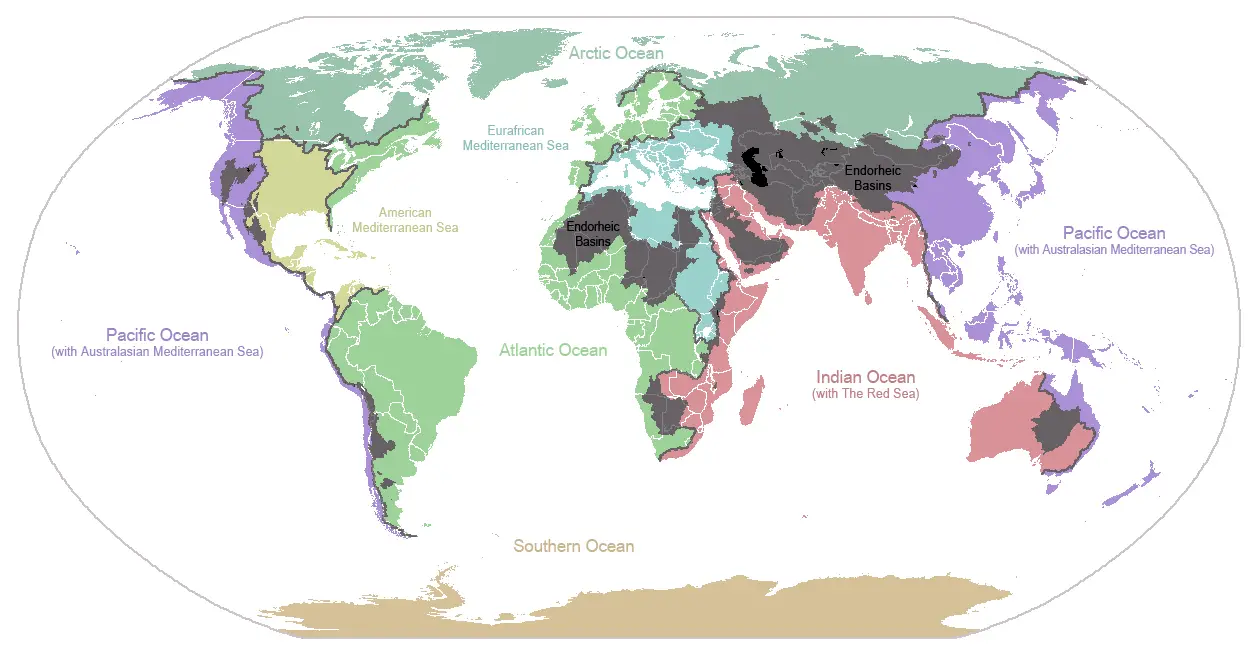
To truly appreciate how water flows across our planet, look at this stunning map created by mapmaker Robert Szucs. Each color shows water flowing to different oceans, creating a beautiful visualization of Earth’s water patterns.
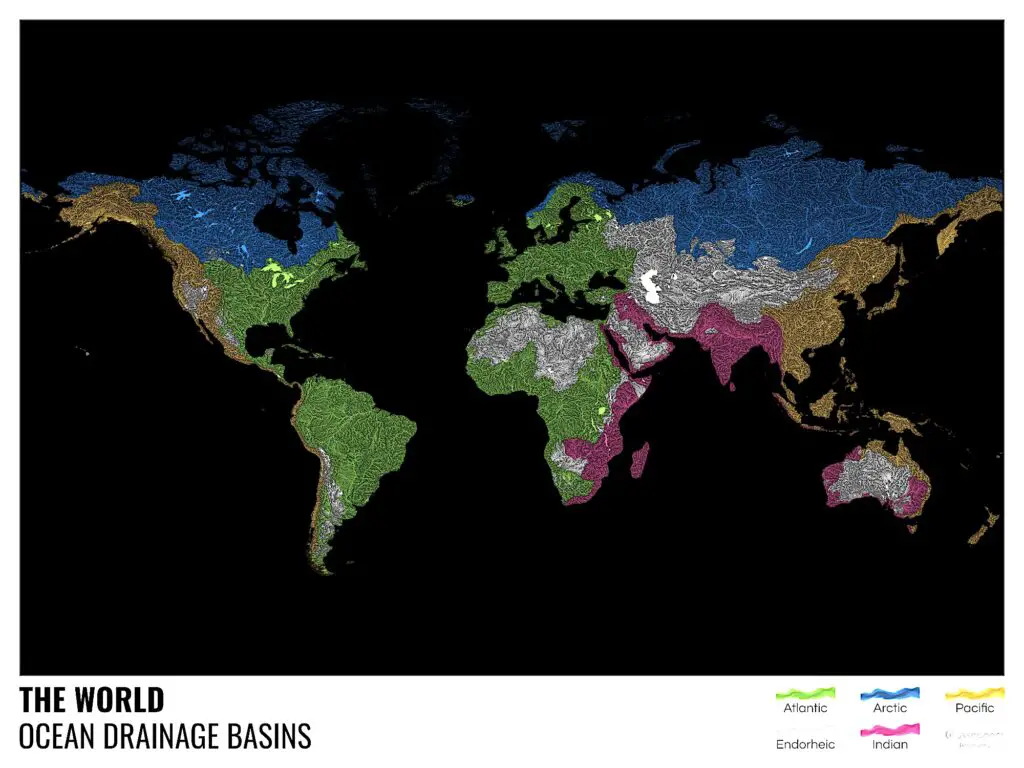
Earth’s Major Ocean Basins
The Atlantic Giant
The Atlantic Ocean drainage basin (69.8 million km² or 26.9 million mi²) is Earth’s largest water collector. Picture an area almost as big as Russia and China combined – that’s how much land drains into the Atlantic! This massive basin:
- Collects water from five continents
- Contains the Amazon River system
- Influences weather patterns across the Northern and Southern hemispheres
The Arctic Collection
The Arctic Ocean basin (23.1 million km² or 8.9 million mi²) is about the size of North America. As our planet’s northern water collector, it:
- Gathers water from massive Siberian rivers
- Plays a crucial role in global climate
- Faces rapid changes as Arctic ice melts
The Pacific Network
The Pacific drainage basin (20.3 million km² or 7.8 million mi²) could fit two United States within its borders. This dynamic system:
- Features the steepest river gradients
- Contains the Ring of Fire’s volcanic regions
- Creates some of Earth’s fastest-moving rivers
The Indian Ocean System
The Indian Ocean basin (19.4 million km² or 7.5 million mi²) is roughly the size of Russia. This unique system:
- Changes direction with monsoon seasons
- Drains the highest mountains on Earth
- Supports half of the world’s population
Nature’s Closed Systems: Endorheic Basins
Some of Earth’s most fascinating water stories happen in places where water never reaches the ocean. These endorheic basins create unique landscapes and crucial ecosystems:
The Major Players
The Caspian Sea basin (3.6 million km² or 1.4 million mi²) leads these landlocked systems. As the world’s largest inland sea, it’s an ecosystem unlike any other. Following close behind is the Chad basin (2.5 million km² or 964,000 mi²), a vital water system in North-Central Africa.
The famous Aral Sea basin (1.6 million km² or 625,000 mi²) tells a cautionary tale of environmental change. Once one of the world’s largest lakes, it has dramatically shrunk due to human water use, though restoration efforts continue in some areas.
African Water Systems
The Chad basin (2.5 million km² or 964,000 mi²) dominates North-Central Africa’s water landscape. The Lake Chad Basin (1.0 million km² or 400,000 mi²) within it supports millions across four countries.
The Okavango Basin (721,258 km² or 278,479 mi²) creates Africa’s largest inland delta, transforming desert into paradise during seasonal floods. The Cuvelai-Etosha Basin (166,649 km² or 64,344 mi²) in Namibia experiences similar dramatic seasonal changes.
Lake Turkana’s basin (130,860 km² or 50,530 mi²) sustains life in East Africa’s arid regions, while Ethiopia’s Awash Basin (116,000 km² or 45,000 mi²) has supported civilizations since ancient times.
Central Asian Waters
The Lake Balkhash Basin (512,015 km² or 197,690 mi²) in Kazakhstan maintains a delicate balance between fresh and saline waters. The Sistan Basin (370,000 km² or 140,000 mi²), shared between Iran and Afghanistan, has supported civilizations for thousands of years. China’s ancient Tarim Basin (906,500 km² or 350,000 mi²) was crucial to the historic Silk Road.
Americas’ Inland Seas
North America’s Great Basin (492,000 km² or 190,000 mi²) spans most of Nevada and parts of Utah, featuring stunning salt flats and seasonal lakes. In Mexico, the Mapimí Basin (260,000 km² or 100,000 mi²) creates unique desert ecosystems.
South America hosts the remarkable Lake Titicaca system (144,590 km² or 55,830 mi²) – the world’s highest navigable lake – and Argentina’s Mar Chiquita (129,715 km² or 50,083 mi²), a crucial stopover for migratory birds.
Australia’s Desert Lake
Australia’s Lake Eyre Basin (1.2 million km² or 460,000 mi²) transforms from desert to wetland with seasonal rains, creating one of Earth’s most dramatic landscape changes.
Why Endorheic Basins Matter
These closed water systems are more than just geographical curiosities. They:
- Create unique ecosystems found nowhere else on Earth
- Support millions of people with water and resources
- Serve as indicators of climate change
- Preserve ancient cultural histories
- Provide crucial habitats for migratory birds
- Face particular challenges from human development and climate change
Why Ocean Drainage Matters
These water systems do more than move rain to the sea – they’re the lifeblood of our planet:
- They transport nutrients that feed ocean ecosystems
- They regulate global climate patterns
- They support countless species and habitats
- They shape the land through erosion and sediment transport
Today, these systems face unprecedented challenges from climate change, pollution, and human development. Understanding how they work helps us protect these vital networks for future generations.
Explore More
Want to dive deeper into Earth’s water systems? Check out these excellent books, maps, and atlases available on Amazon:
- The Fascinating Ocean Book for Kids: 500 Incredible Facts! (Fascinating Facts)
- Maps of the World’s Oceans: An Illustrated Children’s Atlas to the Seas and all the Creatures and Plants that Live There
- National Geographic World, Pacific Centered Wall Map – Classic – Laminated (46 x 30.5 in) (National Geographic Reference Map)
Next time you see a river or catch a raindrop, remember you’re witnessing part of Earth’s incredible water journey – a system that’s been shaping our planet for millions of years.

